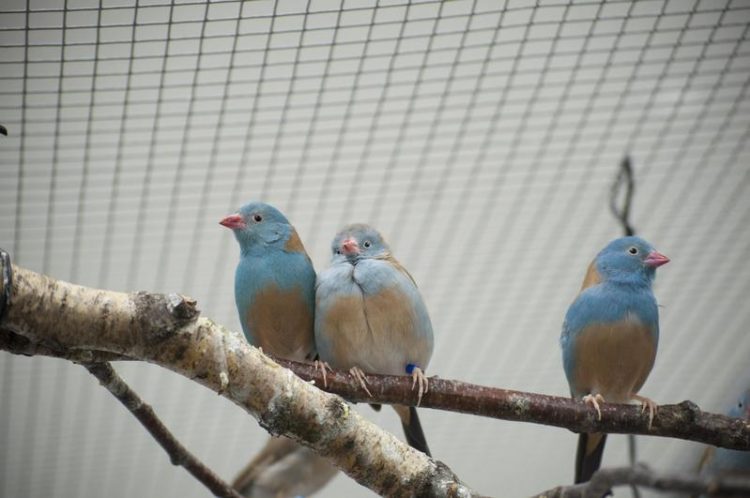Couples showing off: Songbirds are more passionate in front of an audience

A couple (left) and a single male (right) of blue-capped cordon-bleus Nao Ota
Mutual courtship displays have generally been understood as a form of private communication between a male and a female, and many researchers have focused on this aspect. The cordon-bleu is a socially monogamous songbird found in Africa. In its courtship display, both sexes sing and sometimes add a unique dance that resembles tap dancing.
Birds that live in flocks like cordon-bleus are thought to carry out courtship communications in the presence of other birds. However, very little research has been conducted on whether the individuals performing courtship displays are influenced by the presence of other birds.
In the present study published in Science Advances, researchers from Hokkaido University in Japan and the Max Planck Institute for Ornithology in Seewiesen, Germany, focused on this so-called audience effect.
In the experiment, the researchers placed paired couples in situations with and without an audience and observed their behavior.
The researchers found that cordon-bleu couples tended to sing more courtship songs accompanied by dancing when an audience — especially if it is a member of the opposite sex — is present. In contrast, courtship displays without dancing were fewer when an audience was present.
As the birds were directing their courtship dancing toward their partners rather than the audience, Nao Ota of the research team concludes: “Performing a more elaborate courtship display toward a partner likely is meant to advertise the relationship to other individuals, which is a significant act among birds who live in flocks.”
Researchers hypothesize that loyalty and bonding are necessary for cordon-bleu pairs to maintain long-term coupling relationships. “This could provide insights into how complex communication signals have developed among animals, including human beings, that establish coupling relationships,” Nao Ota added.
Dr. Nao Ota
Max Planck Institute for Ornithology in Seewiesen
nota@orn.mpg.de
+49 8157 932-258
Ota N., et al., Couples showing off: Audience promotes both male and female multimodal courtship display in a songbird. Science Advances, October 3, 2018.
https://www.dropbox.com/sh/9qul0abplqx7ptx/AADPXS1Ldd7UoDR_Twaj3COJa?dl=0 (Videos and pictures)
Media Contact
All latest news from the category: Life Sciences and Chemistry
Articles and reports from the Life Sciences and chemistry area deal with applied and basic research into modern biology, chemistry and human medicine.
Valuable information can be found on a range of life sciences fields including bacteriology, biochemistry, bionics, bioinformatics, biophysics, biotechnology, genetics, geobotany, human biology, marine biology, microbiology, molecular biology, cellular biology, zoology, bioinorganic chemistry, microchemistry and environmental chemistry.
Newest articles

Superradiant atoms could push the boundaries of how precisely time can be measured
Superradiant atoms can help us measure time more precisely than ever. In a new study, researchers from the University of Copenhagen present a new method for measuring the time interval,…

Ion thermoelectric conversion devices for near room temperature
The electrode sheet of the thermoelectric device consists of ionic hydrogel, which is sandwiched between the electrodes to form, and the Prussian blue on the electrode undergoes a redox reaction…

Zap Energy achieves 37-million-degree temperatures in a compact device
New publication reports record electron temperatures for a small-scale, sheared-flow-stabilized Z-pinch fusion device. In the nine decades since humans first produced fusion reactions, only a few fusion technologies have demonstrated…





















